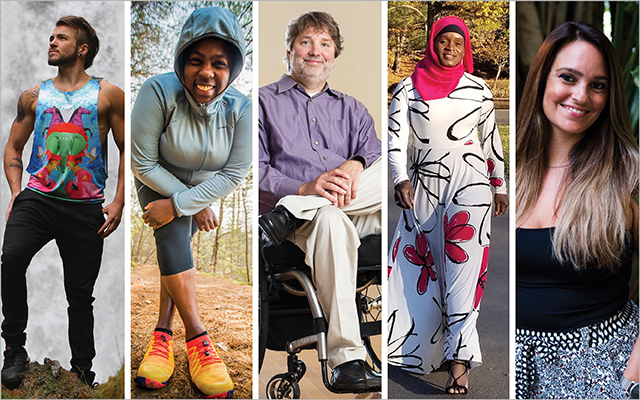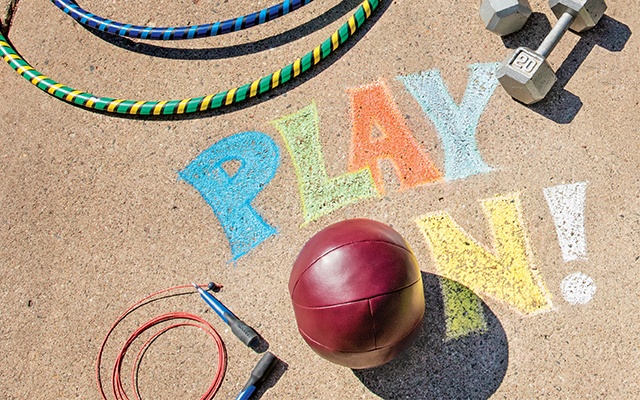What are you training for?
I’ve lost count of the number of times I’ve been asked this question. I used to bristle at the well-intentioned query, but these days, it feels pretty cool to review my motivations, past and present.
When I first started exercising as a preteen in puberty, I didn’t look at it as “training.” It was an effort to control my changing body, to lose weight even as I was still growing, and to pursue the supermodel figure I coveted then.
I didn’t play sports, and I was shy in gym class, where I mostly tried to stay out of the way. But after school I worked out in private, following along to the VHS tapes that promised to make me long, lean, svelte, and trim.
In the years that followed, I became less interested in attaining a thigh gap, but aesthetics remained my primary motivation for a long time. Exercise is a powerful way to shape and reshape the body, and through most of my 20s I worked out with my outsides in mind.
My focus began to change in my late 20s as I took up running and strength training. Performance overtook aesthetics as my main motivation. As I ran, I became interested in completing 5Ks, 10Ks, 10-milers, and half-marathons. As I lifted weights, I wanted to move ever-heavier loads more efficiently and learn new “tricks” to compete in Strongman, powerlifting, and kettlebell competitions.
Performance is a pretty rad and addicting goal, especially when you’re new to an activity. I loved the idea that each day I could be better than yesterday, and that tomorrow held the potential for being better than better.
The focus on performance, too, eventually shifted. Years of training slowed progress; injury brought it to a standstill. My body no longer looked or performed in a way that I desired or could even identify with. Exercise became rehabilitation and a tool to support my mental health.
Continuing to move my body and reimagining what “counted” as exercise helped me find joy in fitness — perhaps for the first time ever — as it became untethered from how I saw myself or presented myself in the world.
And even the rehab and mental-health focuses didn’t stay at the forefront. Over time, I relied less and less on “motivation” — I exercised because it was just something I did.
What are you training for? I have trained to achieve a particular look. I have trained to compete against others and perform better than my past selves. I have trained to exorcise personal demons and to feel better. And I have trained simply as a matter of being.
In writing this, I see I have presented these states of motivation as a linear progression — implying, perhaps, that one type of motivation is better than another and that there is a “higher level” to achieve. That is not at all what I believe.
Rather, to me, motivation exists on a spectrum. Aesthetics, performance, joy, being: These are the areas of the spectrum that I’ve had the privilege to explore, and rarely only one at a time.
There is a tendency in fitness — and many other human endeavors — to seek out the “right” way. A “right” goal, a “right” motivation, a “right” exercise or sport or activity. As if choosing what’s “right” is choosing what will make our dreams come true. My experience, in fitness and in life, is that there is no right way to do much of anything.
If an aesthetic goal motivates you to train, that’s cool! If competing is your jam, that’s cool, too! If you just feel good getting out and doing whatever your movement thing is, keep it up! If you’re motivated by some combination of different factors that matter to you, awesome!
If I’ve learned anything in thinking about “what I’m training for,” it’s this: Motivation is fluid. It’s easier to embrace this fluidity than to feel defeated by it.
Whatever I do, I try to do it with consistency and compassion. I try to keep in mind that whatever my goal or motivation is at a given moment, it’s almost guaranteed to change as I evolve and grow as a person and the world disrupts even my best plans. I try not to get too attached to what motivates me, though this is certainly easier said than done.
So, what am I training for now?
The best answer I’ve got these days is “Everything and nothing.” I train in order to keep moving. And right now, that feels great.
This originally appeared as “What Are You Training For?” in the December 2020 print issue of Experience Life.




This Post Has 0 Comments